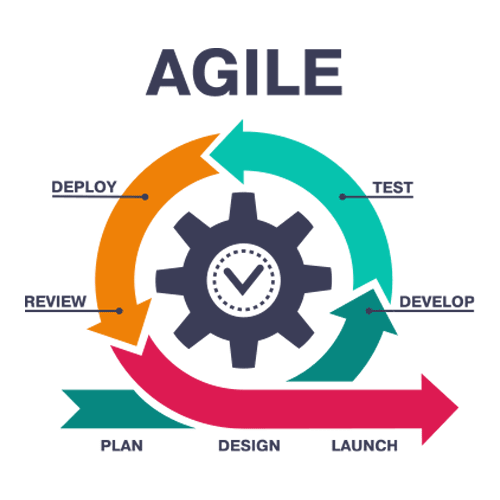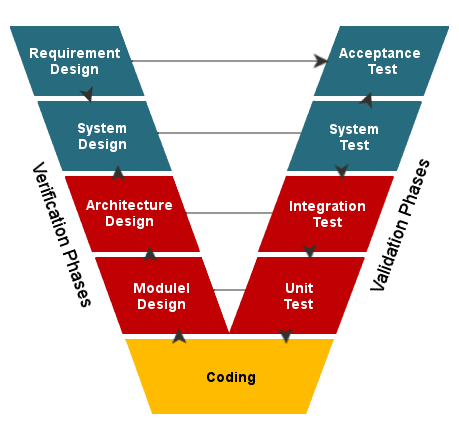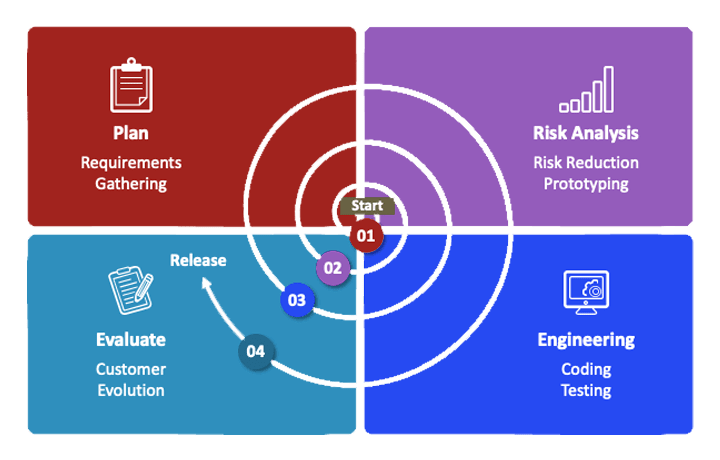Developing an app is not an easy task. It requires a structured and disciplined approach to ensure that the end product is functional, reliable and meets the needs of the target audience.
App development methodologies are frameworks that help developers plan, design, and implement the mobile app development process. These methodologies provide a structured approach to app development, making it easier for teams to collaborate, manage resources, and deliver quality products on time.
There are several app development methodologies, each with its own unique approach and principles. In this beginner's guide to app development methodologies, we will discuss four of the most popular methodologies: Agile, Waterfall, V-model, and Spiral.
Whether you are a new app developer or a seasoned professional, this guide will provide you with a solid foundation in app development methodologies and help you choose the best approach for your next project.
Types of App Development Methodologies
You have a brilliant idea for a software application and you're ready to bring it to life. But where do you begin?
“App Development Methodology” is the answer.
It refers to a set of principles, practices, and processes that guide the development of a software application from concept to launch.
The choice of methodology is crucial as it can significantly impact the success of your mobile app development project.
Each methodology has its own unique approach and advantages, making it important to understand each of them in order to choose the best one for your project.
Let's take a closer look at the four most popular app development methodologies: Agile, Waterfall, V-model, and Spiral.
Agile Methodology
It’s an iterative and incremental methodology that focuses on delivering a working product in small increments. The Agile approach emphasizes collaboration between the development team and stakeholders, continuous feedback, and the ability to adapt to changing requirements. It is particularly useful for complex and rapidly evolving projects, where requirements are likely to change.
Seems too jargon. Right? Let’s simplify it.
Assume a scenario in which you have to develop a mobile application with your team for a client. The client has given you some basic requirements. You know that it's going to take a lot of time and effort to build all the features and make sure the app works smoothly.
With the Agile methodology, your team would break down the development process into smaller parts or "iterations". Each iteration would focus on building one or a few features at a time. For example, in the first iteration, your team might work on building the messaging feature for the app.
After each iteration, your team would get feedback from the client. This feedback would help your team know what to improve and what to change in the next iteration. That’s why the Agile approach emphasizes collaboration between team members and clients. This means that everyone involved in the project works together to ensure that the app is being built correctly and meets the needs of its users.
Subsets
There are a few subsets in Agile methodology
- Scrum
- Kanban
- Lean
- Extreme Programming (XP)
- Crystal
- Dynamic Systems Development Method (DSDM)
- Feature-Driven Development (FDD)
- Adaptive Software Development (ASD)
- Agile Unified Process (AUP)
- Lean Startup.
When to choose Agile?
Agile is particularly useful for complex and rapidly evolving projects, where requirements are likely to change. For example, if the social media platform decides to add a new feature or change an existing one, your team can easily adapt and make the necessary changes in the next iteration.
Overall, the Agile methodology allows teams to build a working product in small increments, receive continuous feedback, and collaborate closely with stakeholders to ensure that the app is meeting the needs of its users. Now, let’s explore the Waterfall methodology.
Waterfall Methodology
The Waterfall methodology is a linear and sequential approach to software development that involves a series of distinct stages, with each stage dependent on the completion of the previous one. It’s characterized by a strong emphasis on planning, documentation, and sign-offs at each stage of development.
Each stage is completed before moving on to the next, and any changes to the project scope or requirements are handled through a formal change management process.
This approach provides a clear and structured framework for development, with a focus on delivering a final product that meets the predefined requirements and quality standards.
Subset
The Waterfall methodology does not have any subsets as it is a single, linear approach to software development.
When to Choose?
This approach is often used in projects where the requirements are well-defined and fixed. In this method, a thorough understanding of the project scope is required before the development can begin.
Overall, the Waterfall methodology is a well-established and widely used approach to software development that is particularly suited to projects with well-defined and fixed requirements.
However, it may not be the best fit for projects where requirements are likely to change or evolve over time, as it can be inflexible when it comes to adapting to changing circumstances.
*V-model Methodology *
Most people thought that the V-model methodology and the Waterfall methodology are the same. But it’s not. Despite both methodologies having a few similarities, they’re not the same.
The V-model is often seen as an extension or modification of the Waterfall methodology,
The V-model is an extension of the Waterfall methodology that emphasizes the testing and verification of each stage of development. This allows for earlier detection and resolution of defects, which can help to reduce the overall development time and cost. It provides a clear and structured framework for development, with a focus on delivering a final product that meets the predefined requirements and quality standards.
Subset
The V-model methodology itself is a variant of the Waterfall methodology and doesn't have any specific subsets.
When to Choose?
This methodology is particularly useful for projects where quality is a critical factor. The V-model methodology may be a good fit when the project requires,
- A high level of testing and verification to ensure the quality of the final product.
- Clear and well-defined requirements that are unlikely to change.
- Formalized and structured approach to development, with a focus on ensuring that each stage of development is completed before moving on to the next.
- Compliance with specific regulations or standards, such as those in the healthcare or defense industries. However, it's important to note that the V-model may not be the best fit for projects that are complex, rapidly evolving, or require flexibility and adaptability.
Spiral Methodology
The Spiral Methodology is an iterative software development process that involves a series of repeating cycles. Each cycle includes four stages: planning, risk analysis, engineering, and evaluation.
During the planning stage, the objectives, alternatives, and constraints are identified. The risk analysis stage involves identifying and evaluating potential risks that could arise during development.
The engineering stage involves developing the software, and the evaluation stage involves reviewing the results of the previous stages. Each cycle is repeated until the software is complete.
The Spiral Methodology places a strong emphasis on risk management and incorporates user feedback and changes in requirements throughout the development process.
Subset
There are no subsets of Spiral methodology as it is a standalone methodology. However, some software development teams may choose to incorporate certain elements of the Spiral methodology into their development process, depending on the specific requirements of their project.
When to Choose?
The Spiral methodology is a good choice for software development projects that involve a high degree of risk or uncertainty, where it is important to mitigate risk at every stage of the project.
It is also a good choice for projects that require a significant amount of prototyping or research and development like mobile finance app development, hospital management app development, etc.
Closing Thoughts
There are many more kinds of app/ software development methodologies. Each methodology has its own advantages and disadvantages, making it important to carefully consider which one will be the best fit for your project.
So, understanding and determining which one best suits the needs of a project ensures the success of your software application.
An expert team in a top mobile app development company practices this kind of validation process for each project to produce the best outcome. This is one of the secrets behind the success of a mobile app!
Want to develop a successful app? Contact Uplogic Technologies now!











Top comments (0)